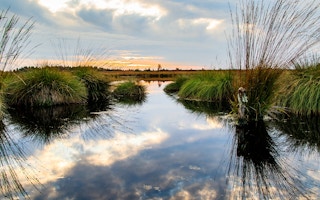East Africa’s Kariba Dam is almost empty due to diminishing rains. In Brazil, Sao Paulo’s reservoirs were reduced to dried mud three years ago, and experts say the city is heading toward another dry spell. Catastrophic floods recently wreaked havoc in southern England, Texas and Bangkok.
These are not simply one-off events; they represent systemic failures in water infrastructure development—failures that are increasing in frequency and severity as Earth’s climate shifts.
A new financial mechanism—“green bonds” that pay for using ecosystems as “natural infrastructure” for clean, ample water—can help.
Green bonds for natural infrastructure
Most people think of water infrastructure as dams, pipes and water treatment plants. Natural infrastructure like healthy forests, farms, rivers and wetlands can also address supply and quality challenges by filtering water, buffering against floods and regulating flow. Combining built and natural forms of infrastructure – for example, by restoring a forest that surrounds a water treatment plant—combines the benefits of both systems. These hybrid approaches often save money, increase the lifespan of built infrastructure, improve resiliency to climate change and produce co-benefits like reduced carbon emissions, recreation, rural jobs and habitat protection.
Water infrastructure projects are often funded by bonds, which allow cities or utilities to pay back investors over time. Bonds have historically ignored natural infrastructure in favor of traditional built infrastructure. Even “green bonds,” which specifically direct financing to environmental projects, have largely overlooked the potential of natural infrastructure. Only a tiny percent of what the world spends on water investments overall goes to certified green projects. We are investing in concrete, stone and steel when ecosystems could be providing more resilience and flexibility for the future.
The Climate Bonds Initiative’s (CBI) new Water Infrastructure Standard enables water projects—including projects that utilize natural infrastructure—to be certified as green bonds. This provides an avenue for hybrid and natural infrastructure projects to attract the financing they need to address growing water challenges. The standard also allows cities to communicate with corporations and investors interested in green growth.
Increasing water’s share of the green bonds market
The standard for natural infrastructure builds on phase one of CBI’s Water Infrastructure Standard, launched in 2016 and focused on climate-friendly built, or “grey infrastructure,” for water. Phase one has already directed more than $1.8 billion to climate-smart water infrastructure. For example, San Francisco Public Utilities Commission issued four green bonds in 2016-17 to finance sustainable storm water and wastewater projects. Cape Town, South Africa issued a green bond in 2017 to upgrade reservoirs, treat dirty water to drinking level quality, and replace and upgrade sewers and pumps. While focusing on traditional grey systems, these projects also take emissions and climate resilience into consideration.
Phase two seeks to issue bonds for nature-based and hybrid water infrastructure projects, such as wetlands and watersheds, forests, ranches and agricultural systems that support water collection, storage and treatment; protect against floods; and boost drought resilience. These bonds will allow a project that uses a forest as a key water filtration tool—rather than, or in combination with a new treatment plant—to attract investors.
Importantly, CBI’s green bonds are certified, meaning they meet specific criteria on reducing the rate of climate change and the severity of its impacts, and pass a third party’s evaluation. This gives investors assurance that they’re funding truly green projects—not projects masquerading as green—and rewarding groups developing resilient, pro-ecosystem water projects. Investors want to know their funds are credible investments in sustainability.
The world’s mounting water crises make the need for infrastructure investment clear. Investments should go towards the water infrastructure of the future, rather than repeating yesterday’s mistakes. Projects involving natural infrastructure last longer, adapt to an ever-changing climate and help reduce greenhouse gas emissions.
Todd Gartner is a Senior Associate for the World Resources Institute’s Food, Forests & Water Program, and John H. Matthews is the Secretariat Coordinator for the Alliance for Global Water Adaptation (AGWA). This post is republished from the WRI blog.


















